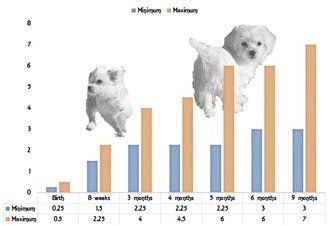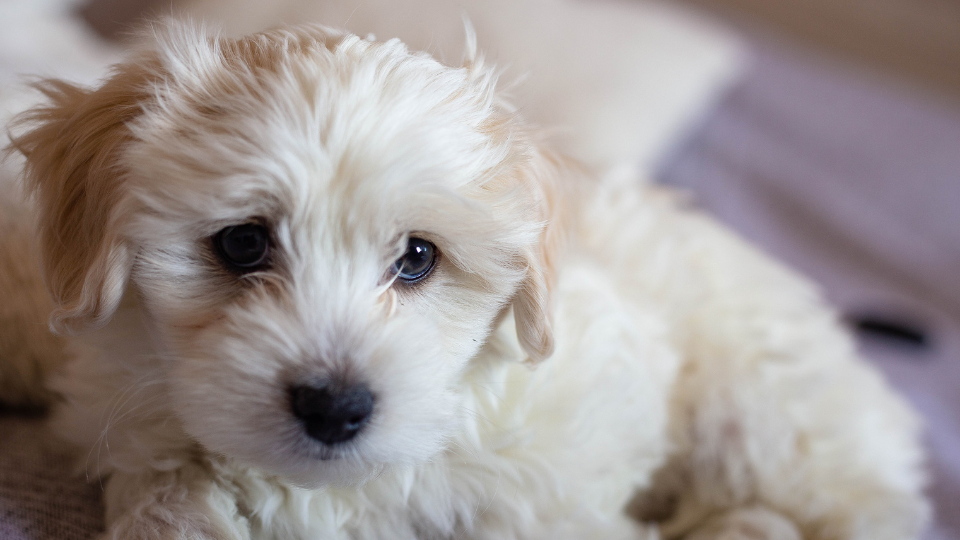Looking to adopt a Maltese? Here’s an interesting fact: Did you know that Maltese dogs are known for their long-lasting youthful appearance? But when does a Maltese stop growing? Let’s find out!
Maltese dogs typically stop growing around the age of one year. During their first year, they go through rapid growth and development. By the time they reach adulthood, they usually weigh between 4 and 7 pounds, with a height of around 8-10 inches. It’s important to provide proper nutrition and exercise during this crucial growth period to ensure they reach their full potential. So if you’re considering bringing home a Maltese puppy, get ready for a year of adorable growth milestones!
During the first year, a Maltese experiences significant physical changes. The breed has a long history, dating back to ancient times, where they were admired for their elegant appearance. Today, they are still regarded as a symbol of luxury and grace. While their growth rate may vary individually, it’s crucial to monitor their nutrition and physical activity to support healthy development. So remember, if you want your Maltese to thrive and fulfill their genetic potential, ensure they have a well-balanced diet, regular exercise, and plenty of love and care.

When Does a Maltese Stop Growing?
Maltese dogs are known for their small size and fluffy white coat. If you’re a proud owner of a Maltese or considering getting one, you might be wondering when your adorable pup will reach its full size. Understanding the growth stages of a Maltese can help you provide the appropriate care and anticipate any changes in their behavior or nutritional needs. In this article, we will explore the different growth stages of a Maltese and when they typically stop growing.
Factors That Influence the Growth of a Maltese
The growth of a Maltese can be influenced by various factors, including genetics, nutrition, and overall health. Genetics play a significant role in determining how big or small a Maltese will be. If both parents of a Maltese puppy are small in size, it is more likely that the puppy will also be small. On the other hand, if the parents are larger, the puppy may grow to be bigger.
Nutrition is another crucial factor in the growth process of a Maltese. Providing a balanced diet with appropriate amounts of protein, carbohydrates, fats, vitamins, and minerals is essential for their overall development. A high-quality dog food specifically formulated for small breeds like Maltese is recommended. It is also important to ensure the puppy is not overfed, as excessive weight gain can lead to health issues and affect their growth.
Growth Stages of a Maltese
Just like any other dog breed, a Maltese goes through various growth stages, each with its characteristics and milestones. Understanding these stages can help you track your Maltese’s growth and ensure they are developing properly.
Stage 1: Newborn
Maltese puppies are typically born weighing between 3 to 5 ounces and are completely dependent on their mother for nourishment and care. During this stage, their main focus is on nursing and growing. Their eyes and ears are closed, and they are not able to walk. They rely on touch and smell to navigate their surroundings.
It is crucial to provide a warm and safe environment for the newborn puppies, as they are susceptible to external risks and temperature changes. The mother’s milk is vital for their growth and development during this stage, as it provides essential nutrients and antibodies.
Tip: Ensure the newborn puppies have a comfortable and clean nesting area, away from any potential dangers, and monitor their weight gain to ensure they are thriving.
Stage 2: Puppyhood
During the puppyhood stage, which typically lasts from 3 weeks to 6 months, Maltese puppies start to explore their surroundings and become more independent. They develop their vision, hearing, and coordination skills, allowing them to interact with their littermates and the environment.
The puppyhood stage is also when the teeth of a Maltese start to come in. Around 3 to 4 weeks of age, the puppy’s deciduous teeth, also known as baby teeth, begin to erupt. These teeth will eventually be replaced by permanent teeth as the puppy grows.
At around 2 to 3 months, Maltese puppies may experience a growth spurt, both in height and weight. However, the growth rate varies from one puppy to another. Some may have a more rapid growth rate during this stage, while others may have a slower and steadier growth rate.
Tip: Provide your Maltese puppy with age-appropriate toys and socialization opportunities to encourage their development and mental stimulation. Regular veterinary check-ups and vaccinations are also crucial during this stage.
Stage 3: Adolescence
Adolescence is the stage where a Maltese puppy starts to transition into adulthood. This stage typically occurs between 6 months to 1 year of age. During adolescence, Maltese dogs may experience hormonal changes, which can affect their behavior and growth rate.
It is common for Maltese puppies to go through a lanky and awkward phase during adolescence. They may appear disproportionate as their body catches up with their limbs. This phase is temporary and usually resolves as the dog reaches maturity.
By the end of the adolescence stage, a Maltese dog is generally close to their full-grown size and weight. However, it is important to note that individual dogs may continue to fill out and develop muscle tone until they are around 2 years old.
Tip: Ensure your Maltese receives regular exercise, consistent training, and a balanced diet during adolescence to support their growth and development.
Additional Factors to Consider
Nutrition and Feeding Guidelines
The nutritional needs of a growing Maltese are different from those of an adult dog. It is essential to provide a diet specifically formulated for small breed puppies. The food should be high in quality protein, carbohydrates, fats, vitamins, and minerals to support their growth and development.
Feeding guidelines provided by the manufacturer on the dog food packaging can give you an idea of the appropriate portion sizes. However, it is important to monitor your Maltese’s weight and adjust the portions accordingly to prevent overfeeding or underfeeding.
Consulting with a veterinarian can also provide personalized recommendations based on your Maltese’s individual needs, including any dietary restrictions or sensitivities.
The Importance of Regular Vet Check-ups
Regular veterinary check-ups are crucial for monitoring the growth and overall health of your Maltese. The veterinarian can assess their weight, size, body condition, and address any concerns or questions you may have.
Vaccinations and preventive care, such as flea and tick prevention, are part of the routine vet visits. Your veterinarian can also provide advice on dental care, grooming, and any other specific needs of your Maltese.
It is recommended to schedule regular check-ups at least once a year or as recommended by your veterinarian.
Conclusion
Understanding the growth stages of a Maltese can help you provide the appropriate care and anticipate any changes in their behavior or nutritional needs. While every Maltese is unique and may grow at different rates, the newborn stage, puppyhood, and adolescence are the key periods where significant growth and development occur.
By providing a balanced diet, regular exercise, and veterinary care, you can ensure your Maltese grows into a healthy and happy adult dog. Monitoring their growth milestones and consulting with a veterinarian can provide further guidance on their specific needs.
Key Takeaways: When Does a Maltese Stop Growing?
- A Maltese usually stops growing between 8 to 12 months of age.
- As a 13-year-old, you can expect a Maltese to be fully grown.
- Genetics play a role in determining the size and growth rate of a Maltese.
- Maltese puppies experience rapid growth during their first few months.
- A healthy diet and regular exercise contribute to proper growth and development in Maltese dogs.
Frequently Asked Questions
As a Maltese owner, you may be curious about when your furry friend will stop growing. Here are some common questions and answers about the growth of Maltese dogs.
1. At what age does a Maltese stop growing?
Much like humans, the growth rate of Maltese dogs can vary. Generally, the height of a Maltese is fully developed by the age of about 12 months. However, their weight may continue to increase until they are around 18 months old. It’s important to remember that these are rough estimates, and individual dogs may reach their full growth potential earlier or later.
Factors like diet, exercise, genetics, and overall health can play a role in how fast a Maltese reaches their adult size. Regular check-ups with a veterinarian can help ensure healthy growth and development.
2. How can I tell if my Maltese has reached its full size?
One way to determine if your Maltese has reached its full size is by considering its weight and height. Keep in mind that Maltese dogs are typically small and lightweight, with adult males weighing between 4 to 7 pounds (1.8 to 3.2 kilograms) and adult females weighing between 3 to 6 pounds (1.4 to 2.7 kilograms).
Additionally, if your Maltese is no longer gaining height and its growth plates have closed, it is likely close to or has reached its full size. Your veterinarian can help assess your dog’s growth and development during regular check-ups.
3. Are there any signs that my Maltese is still growing?
Yes, there are some signs that your Maltese is still in the process of growing. One common sign is a lanky or awkward appearance, where certain body parts may seem disproportionate to the rest of their body. This is often a sign that the dog is still filling out as it continues to grow.
Another sign is an increased appetite. During growth spurts, dogs may experience increased hunger due to the energy needed for their development. If you notice that your Maltese is going through food quickly or seems more voracious than usual, it could be a sign that they are still in the growing phase.
4. Can I influence the growth rate of my Maltese?
While genetics play a significant role in determining the growth rate of a Maltese, there are a few ways you can support their healthy growth. Providing a balanced and nutritious diet is crucial, as it ensures they receive the necessary nutrients for proper development. Feed them high-quality dog food recommended by your veterinarian.
Regular exercise is also important to promote bone and muscle development. However, excessive exercise or overexertion at a young age can potentially harm your Maltese’s growing bones and joints. It’s best to consult with your veterinarian to determine the appropriate exercise routine for your pup.
5. Does neutering or spaying affect a Maltese’s growth?
Neutering or spaying can potentially impact the growth rate of a Maltese. Some studies suggest that altering a dog before they reach sexual maturity may cause them to grow taller but have a narrower frame. However, the effect of neutering or spaying on growth rate can vary from one individual to another.
If you are considering neutering or spaying your Maltese, it’s important to discuss the potential impacts with your veterinarian. They can provide personalized advice based on your specific dog’s age, size, and overall health.

Summary
Wondering when your Maltese puppy will stop growing? Here’s what you need to know:
Maltese dogs typically reach their adult size between 9 and 12 months old. It’s important to provide them with a balanced diet and regular exercise to support healthy growth. Keep in mind that every dog is unique, so the growth rate may vary. Remember to consult your veterinarian for personalized advice.
In conclusion, while there is no exact date when a Maltese stops growing, most reach their adult size by 9 to 12 months. Take good care of your furry friend, and they’ll grow into a happy and healthy adult dog!
